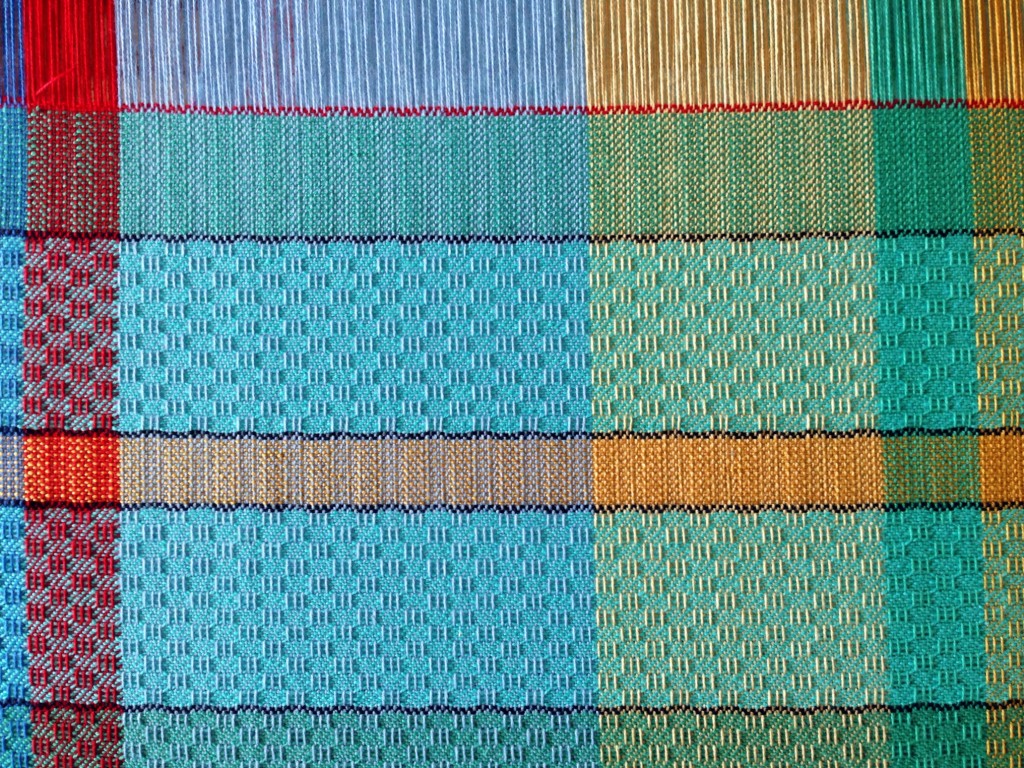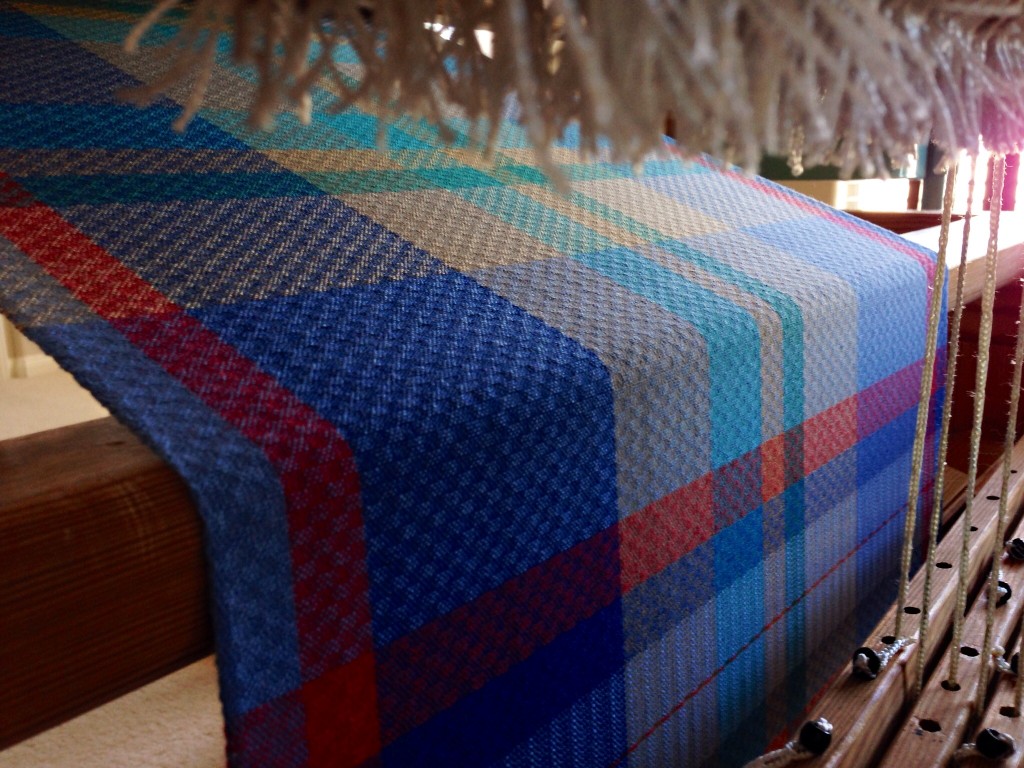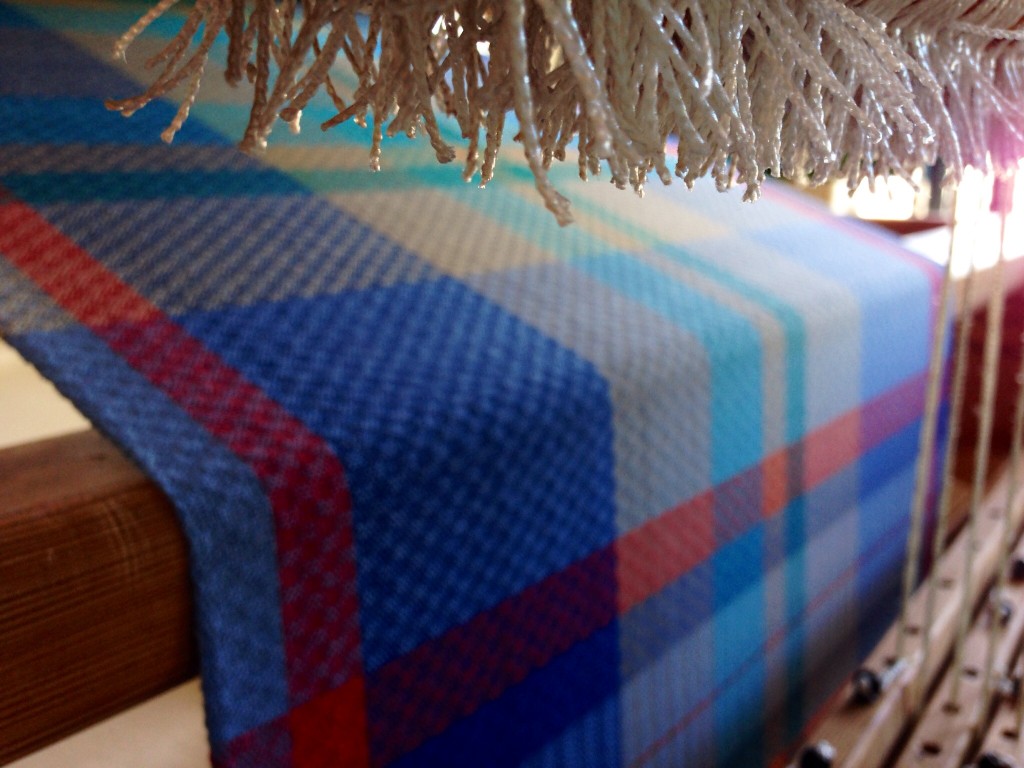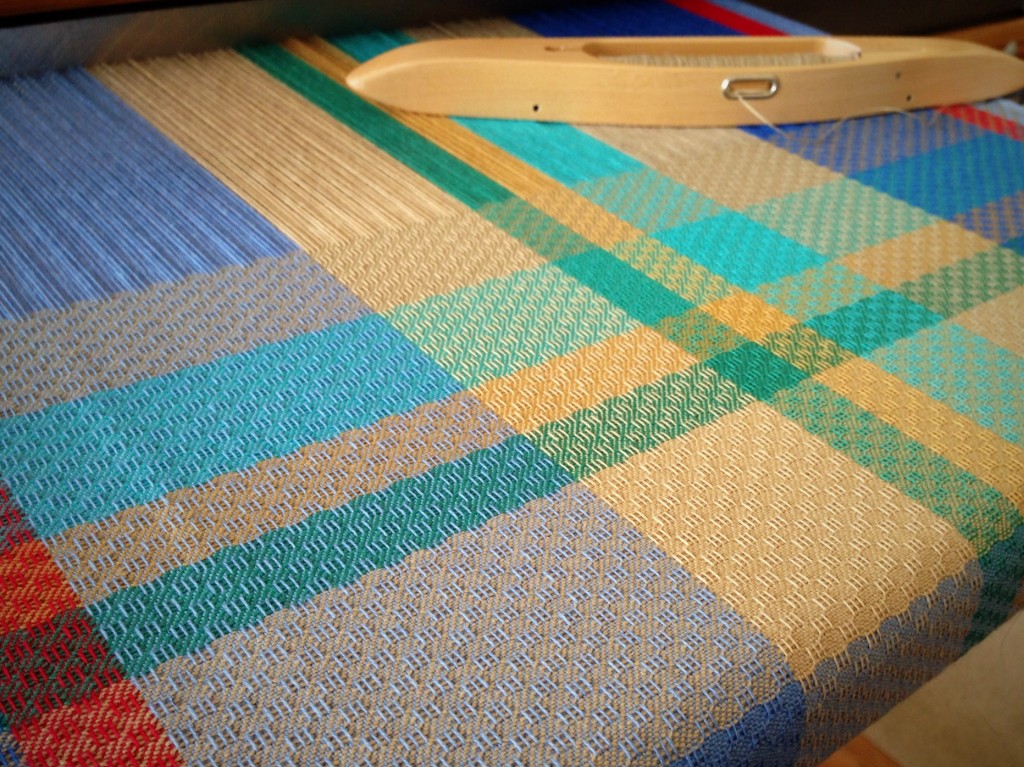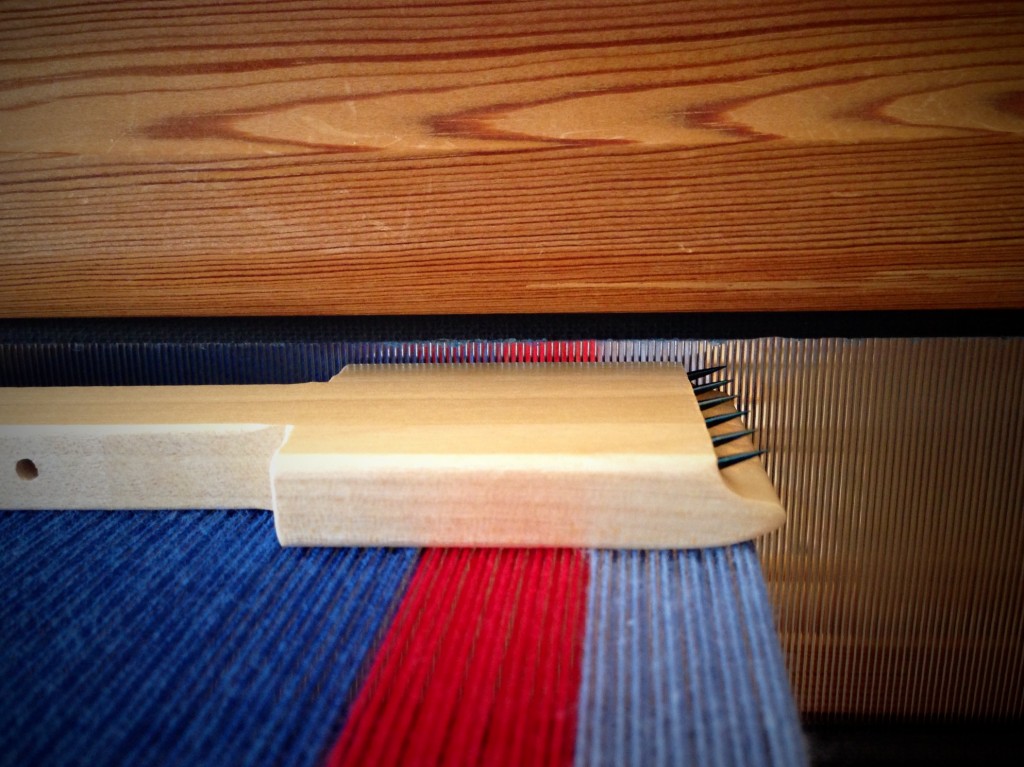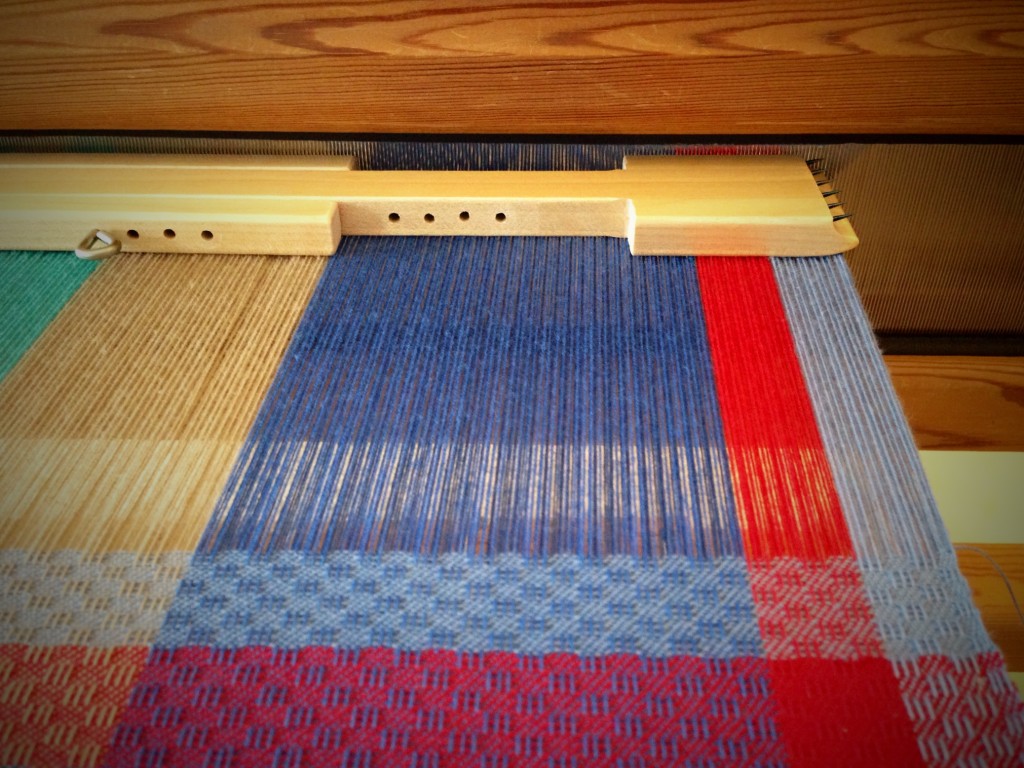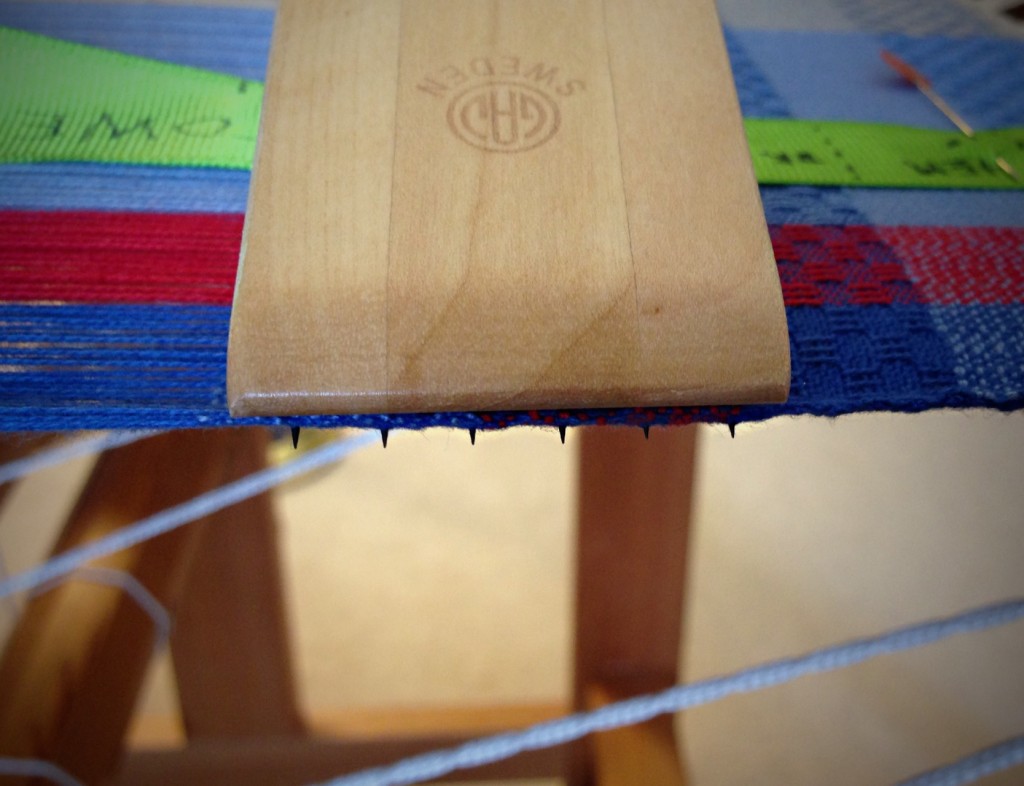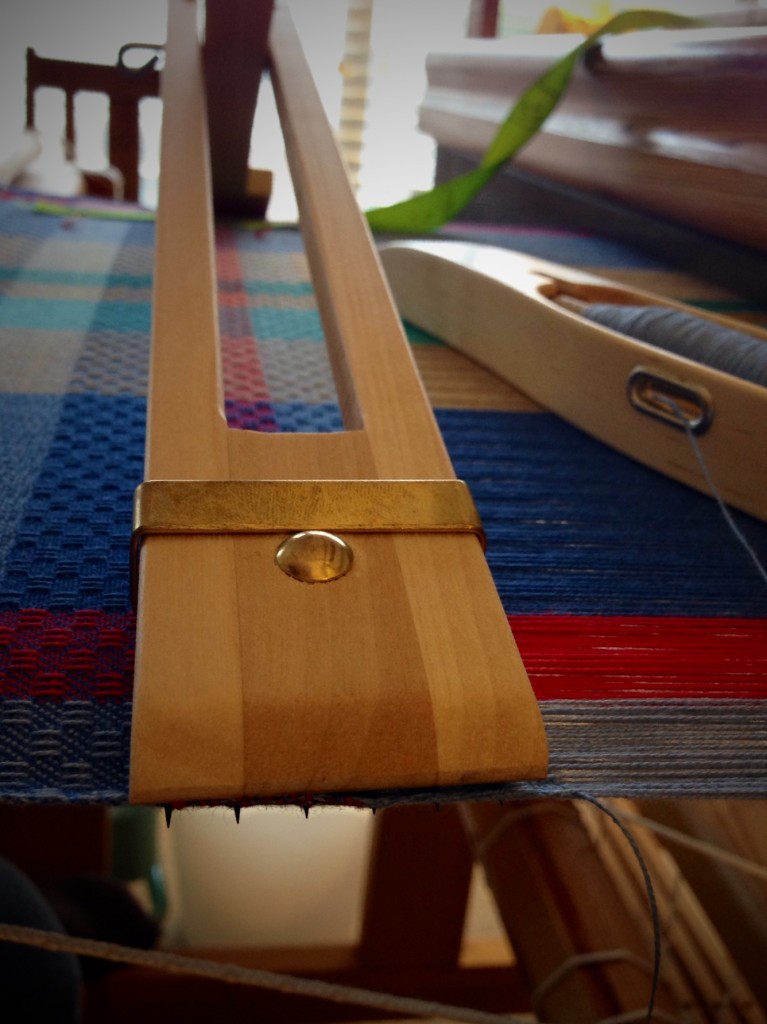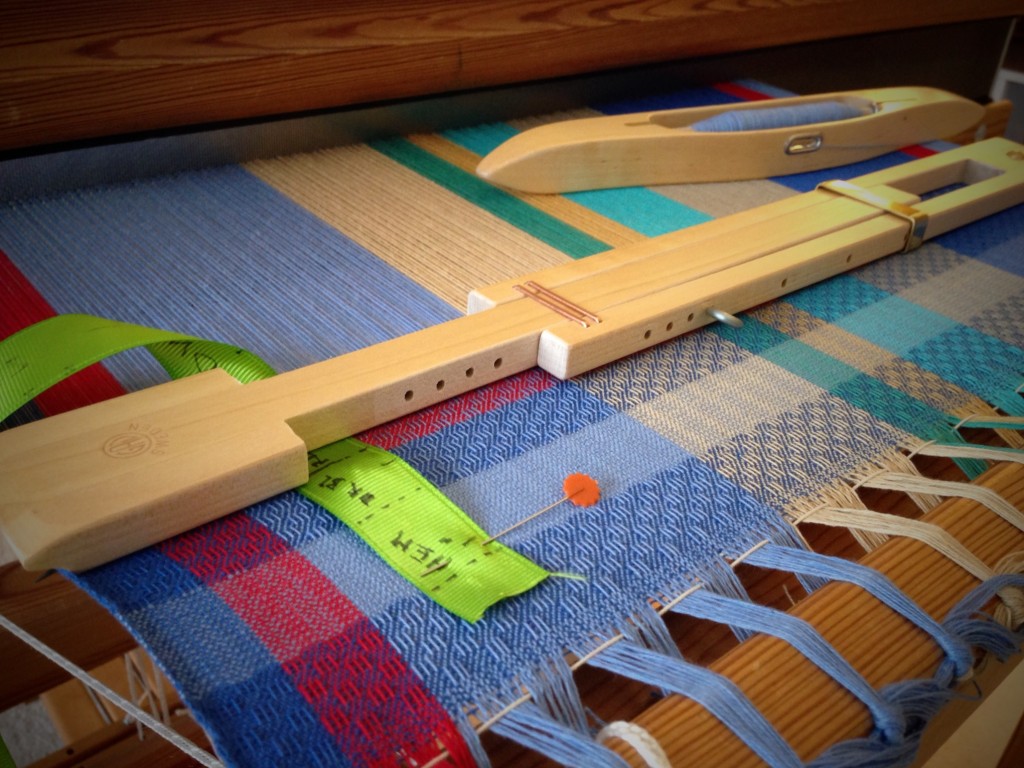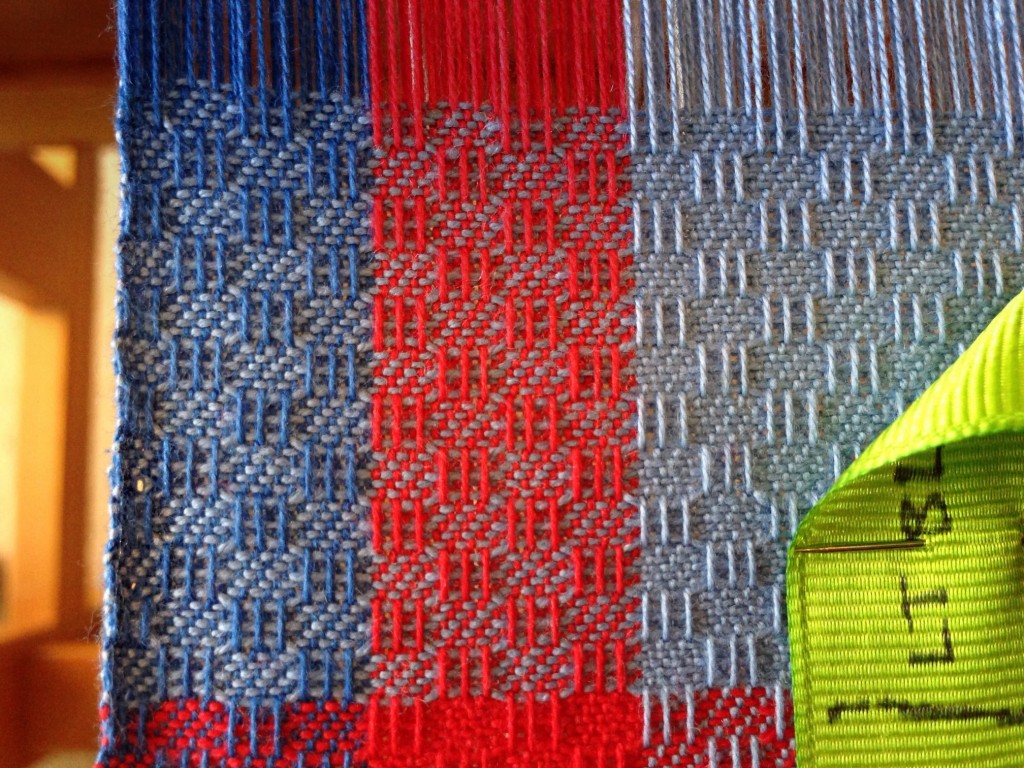Have you thought of using the camera on your phone to help you recall details in your weaving design? I want the simplest way to remember this narrow blue and honey border stripe at the beginning of the towel so I can weave it exactly the same when I get to the other end. What better way than to take a detail snapshot with my iPhone? It’s handy, descriptive, and quick. There are some things that are best remembered with pictures.
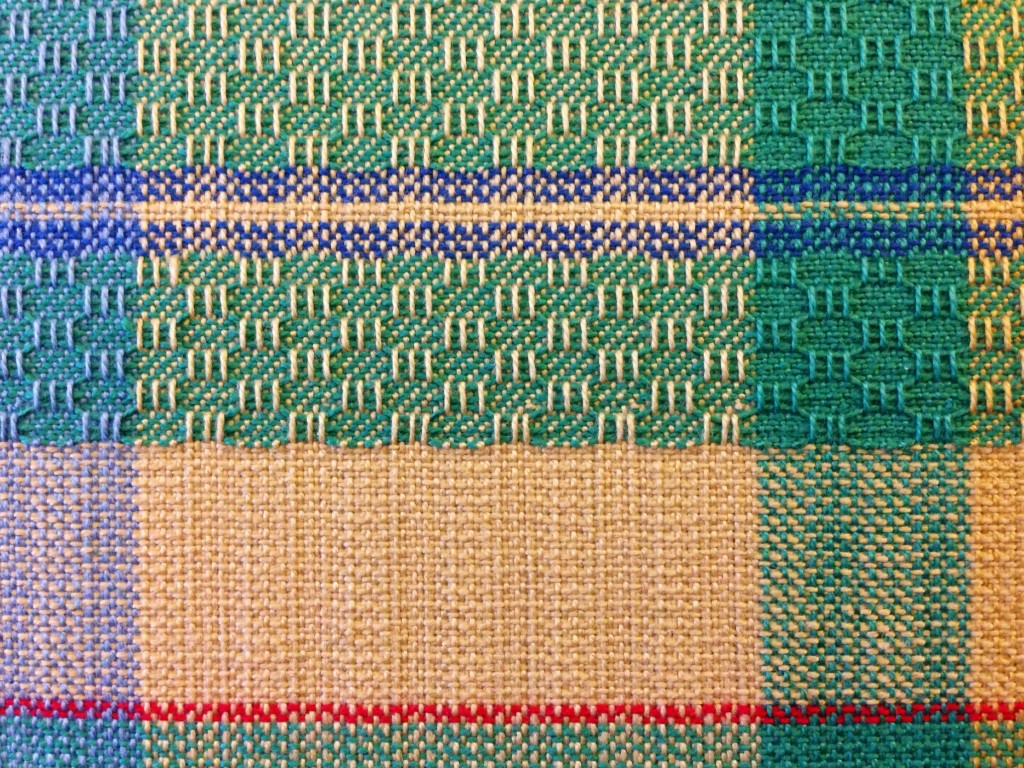
When our heavenly king walked the earth, he was a living picture of heavenly goodness. Compassion, kindness, humility, gentleness, patience. These threads of royalty stood out in humanity because of the contrast next to common threads of envy, selfishness, and prideful boasting. Considering this living snapshot of true royalty, we, too, can wear the clothes that are fit for a king (or queen)! Better than capturing a design element with our iPhones, is capturing the design for our lives from the heart of our grand weaver.
May you remember the details that matter.
Love,
Karen

